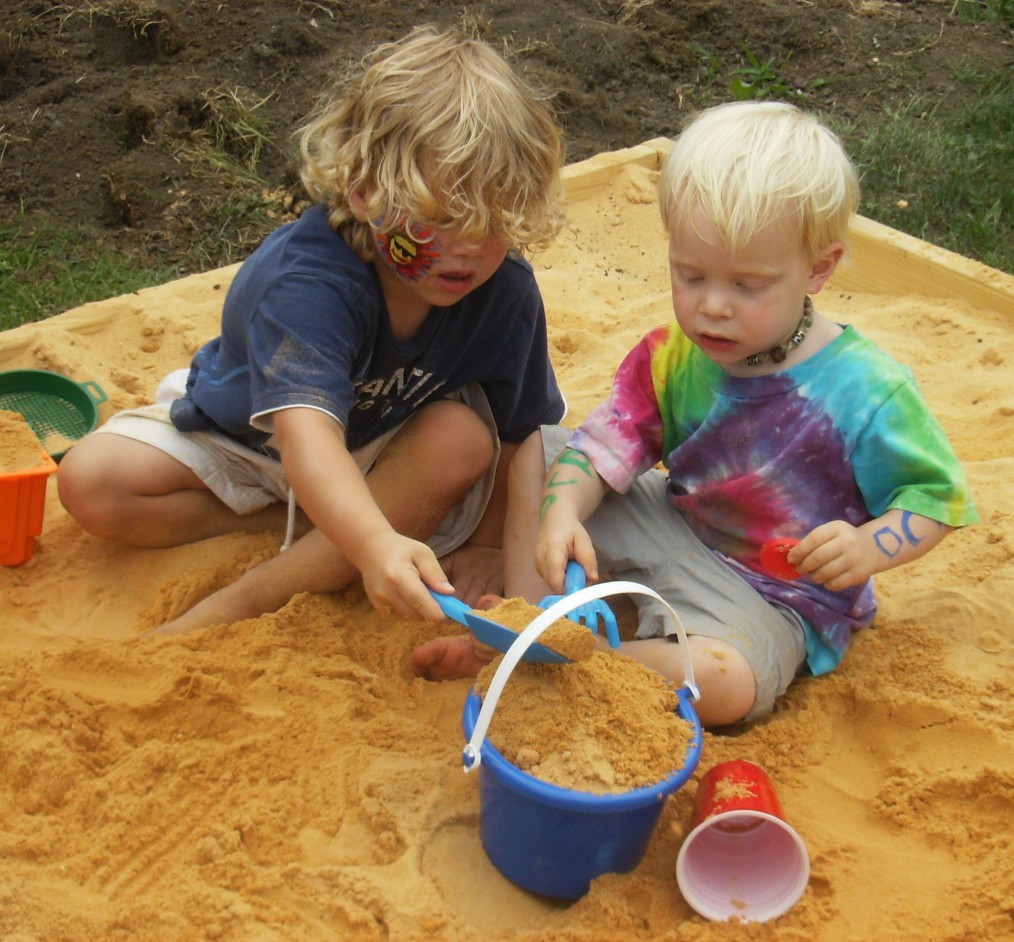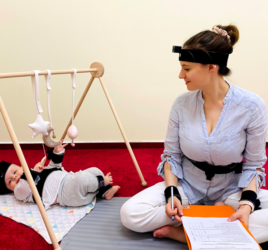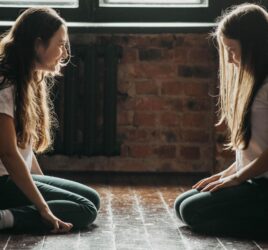
How do young curious minds work together?
Children are spontaneous and social learners with a curious mind. As ‘little scientists’, they explore the world by conducting experiments, establishing causal relations and elaborating on explanations. Moreover, from the preschool age onwards, children are very good at playing and interacting with others. Probably you have watched children in a playground, as they create games, interact with peers, and explore objects with incredible joy.
Playing together
For instance, think of two preschoolers playing to build a marble track. They can build the ramp using different wooden columns to adjust the height of the ramp and to make a marble roll into a basket. As they play together, the children try out different materials, sometimes reaching the target, at other times not. One child can even discover the solution, and still both children can insist on exploring different materials. From the viewpoint of a spectator, this raises a question: Is the variation in these children’s behavior random or systematic? The most intuitive idea for many adults is that children behave chaotically, jumping from one activity to another, constantly changing their attention and shifting between objects.
From the viewpoint of a spectator, this raises a question: Is the variation in these children’s behavior random or systematic?
In the last three decades, psychologists have closely examined children’s reasoning skills and their ability to learn during interaction (e.g in the context of spontaneous play, classroom activities or experimental tasks). These studies have shown that from around two years onwards, children can display incredible scientific reasoning skills that initially were only attributed to the adult mind, such as inference, hypothesis testing and experimentation (see Gopnik, 2012). Psychologists have argued that these reasoning skills do not emerge out of random behaviors, but rather as a function of systematic variations in behaviors, which constitute the basis of learning.
Research has shown that learning takes place on the basis of the variability of behaviors, which also constitutes a main characteristic of developmental processes (see the blog post on variability). For instance, Siegler and Alibali (2004) have shown that children do not stick to a specific strategy when they solve a problem; instead, they seem to be curious about finding possible new ways to reach a goal. During the exploration of a problem, learners discover implicit rules about the effect of their behaviors on the desired outcome. For instance, in the case of the children playing with ramps, after several attempts they can find out that the height of the ramp affects how far a marble can roll. The variation in the exploratory behavior of the children reflects the main source of a dynamic process of thinking: From time to time it is necessary to go some steps back and re-think the relations between actions and the goal in order to find a solution to a problem.
Are two heads always better than one?
But let’s continue with our example of the two children playing together. Inspecting the behavior of the children as they learn ‒and free of any label of success or failure‒ for closely, it is possible to discover regularities. These regularities go beyond their actions in a particular activity; they extend to the process of learning in interaction with others. However, the question is whether, at the preschool age, two heads are always better than one? Usually, psychologists and educators have seen collaboration as a more efficient source of learning than working individually, because it enables the children to exchange points of view and learn from each other. Yet, new studies suggest that the issue of interaction is more complex, and that thinking together does not always lead to better outcomes (e.g. Samaha & De Lisi, 2000).
In our own study with dyads of 5-year olds (Guevara, van Dijk & van Geert, 2014) focusing on how dyadic interaction emerges in the context of problem-solving tasks, we investigated different types of interaction. The results suggest that the most complex reasoning skills (i.e. explanations and predictions) emerged during two main types of dyadic interaction. The first type is working in parallel, which means that both children were working independently to contribute to the solution of the task. The second type is taking turns, referring to the unequal interaction in which only one child works (parallel and passive work) to solve the task, whereas the other child does not contribute (passive work). Thus, while earlier studies indicate that collaboration is an ideal learning scenario, these findings suggest that in the context of problem-solving, joining efforts does not seem to be the most favorite (and constructive) interaction for 5-year olds. Instead, they rather work on a task independently (see also Bahrami, Olsen, Latham, Roepstorff, Rees, & Frith, 2010; Koriat, 2012). A possible explanation for the preference of individual exploration in young children is their self-sufficient desire to explore the world. Probably, you have witnessed this independent attitude when trying to help a child and he or she answers back with his/her favorite mantra: “I can do it myself”.
…interesting things are happening in their young minds while they are working individually or in collaboration
In conclusion, both reasoning and interaction of preschoolers are characterized by the presence of systematic variations and regularities. Next time you watch children playing together, please remember that interesting things are happening in their young minds while they are working individually or in collaboration. They are discovering new information based on their interactions and exploration of the task, regardless of the outcome.
Relevant links and publications
Koriat, A. (2012). When are two heads better than one and why? Science, 336, 360–362.
NOTE: Image by , licenced under CC BY-SA 3.0




My dear Marleny.
Congratulations on your work. I find it pleasant to imagine that the institutions could be at doors of an investigation into the convenience of an excessively early childhood education. A hug.